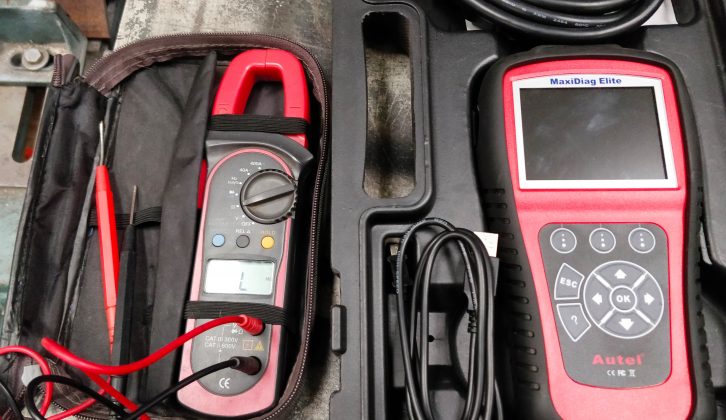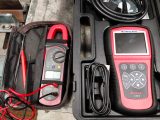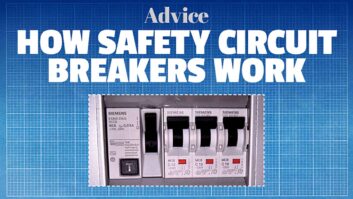Following on from our earlier blog about fault finding, it’s time to look a little more at motorhome diagnostics.
The European On Board Diagnostics (EOBD) system monitors engine systems and logs a diagnostic trouble code (DTC) if anything is outside its normal operating limits.
This usually also switches on the malfunction indicator lamp (MIL).
If it’s a temporary fault – maybe dirt on a throttle position sensor – the MIL stays lit for a few start/stop cycles then, if it doesn’t recur, goes out.
During those cycles, the DTC is stored in ‘pending codes’ but, once the MIL is out, it moves to ‘stored codes’. That’s what we are talking about this time.
Wipe or not to wipe?
The reason for these pending and stored codes is that the system is establishing whether there really is a genuine fault, or if there’s just a momentary problem.
If the fault doesn’t recur in (typically) five cycles, it’s probably not an actual fault, and the DTC is moved to the stored folder.
This is so that if it recurs later, the original DTC will still be in the memory and a technician could read all the DTCs and see that an old fault has occured again.
I often see people on internet forums advising others to buy an EOBD code reader (sometimes referred to as a scanner) so that, if the MIL comes on, they can access the DTCs and clear them.
That’s fine if it really is a one-off fault, but if it happens again later on and a diagnostic technician is brought in, they won’t see the stored code from the previous fault and might think it’s a one-off.
If they then just clear the codes, that’s only going to delay finding and fixing the actual problem.
Logic is key
Diagnostic fault-finding has to be a logical process, and the DTC is only the first step of that process: in many cases, the same DTC could be caused by several faults.
A DTC for the lambda sensor, for example, might be caused by a failed sensor, or could be the result of a faulty mass air flow (MAF) sensor or a faulty injector causing excessive fuelling.
The starting point for diagnostic troubleshooting should actually be the end result of the desired function.
What this means is to check whether the desired function is created by the operative action.
For example, in older vehicles, the indicator switch would pass power directly to the indicator flasher unit and, from there, to the individual lamp units.
So if you switch on the left-hand indicators, check all the lamp units flash; if not, check whether positive and negative are getting to the unit that doesn’t flash.
In modern vehicles, the switch sends a signal to a microcomputer (often referred to as a node), which then switches on the indicator circuit if all the right signals are present.
But the same first checks are required – do all of the indicators flash? If not, are non-working ones getting positive and negative supply?
A careful diagnosis
When checking functions, it’s important to use a good negative connection.
A power probe is useful, because it takes a positive and negative supply from the battery and can show whether both are present at the equipment under test.
Take a non-working rear light, for example – it might be a blown bulb, or a break in the positive supply or the negative connection.
If you check with a multimeter and put the test leads on the bulb connections, it will give the same result for both a broken positive or negative supply.
Using the power probe (or connecting your meter negative to a known negative such as the chassis itself) will show whether both positive and negative are correct.
Step-by-step
This logic needs to be applied to any fault-finding, from a non-working lamp to an engine-management issue.
In the case of an engine fault in a modern vehicle, with the MIL illuminated, the first step is to check whether anything noticeable is evident with engine performance – lack of power or a misfire, perhaps.
Next, connect a scanner and check for DTCs. If there is a lack of power and a DTC for excessive EGR flow, where do we go from here?
You might think the EGR valve is at fault – excessive exhaust gas recirculation would cause a lack of power, but get someone else to drive while you check live data on your scanner, and you might find lower than expected air flow from the MAF sensor.
The next step should be to examine the air intake system for blockages or damage.
If that all checks out, the EGR valve itself comes under scrutiny. But it needs to be checked for function electrically before you decide to replace it.
An alternative method for fault-finding is referred to in the trade as ‘firing the parts cannon’ – replacing stuff at random in the hope that something fixes the problem.
The starting point for diagnostic troubleshooting should be the end result of the desired function









